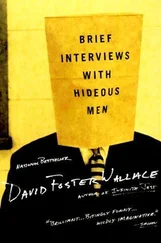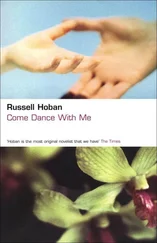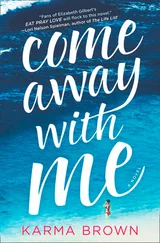Scott MacDonald - A Critical Cinema 2 - Interviews with Independent Filmmakers
Здесь есть возможность читать онлайн «Scott MacDonald - A Critical Cinema 2 - Interviews with Independent Filmmakers» весь текст электронной книги совершенно бесплатно (целиком полную версию без сокращений). В некоторых случаях можно слушать аудио, скачать через торрент в формате fb2 и присутствует краткое содержание. Год выпуска: 1992, ISBN: 1992, Издательство: University of California Press, Жанр: Прочая документальная литература, на английском языке. Описание произведения, (предисловие) а так же отзывы посетителей доступны на портале библиотеки ЛибКат.
- Название:A Critical Cinema 2: Interviews with Independent Filmmakers
- Автор:
- Издательство:University of California Press
- Жанр:
- Год:1992
- ISBN:9780585335100
- Рейтинг книги:3 / 5. Голосов: 1
-
Избранное:Добавить в избранное
- Отзывы:
-
Ваша оценка:
- 60
- 1
- 2
- 3
- 4
- 5
A Critical Cinema 2: Interviews with Independent Filmmakers: краткое содержание, описание и аннотация
Предлагаем к чтению аннотацию, описание, краткое содержание или предисловие (зависит от того, что написал сам автор книги «A Critical Cinema 2: Interviews with Independent Filmmakers»). Если вы не нашли необходимую информацию о книге — напишите в комментариях, мы постараемся отыскать её.
A Critical Cinema 2: Interviews with Independent Filmmakers — читать онлайн бесплатно полную книгу (весь текст) целиком
Ниже представлен текст книги, разбитый по страницам. Система сохранения места последней прочитанной страницы, позволяет с удобством читать онлайн бесплатно книгу «A Critical Cinema 2: Interviews with Independent Filmmakers», без необходимости каждый раз заново искать на чём Вы остановились. Поставьте закладку, и сможете в любой момент перейти на страницу, на которой закончили чтение.
Интервал:
Закладка:
While the interviews in this volume of
A Critical Cinema,
and indeed in the two volumes together, document a considerable variety of filmmaking approaches and offer a composite perspective on a substantial period of independent film history, the limitations of the project are, no doubt, obvious. For one thing, my interviewing has been confined to North America and, with the single exception of Michael Snow, to the United States. This is not to say that no other nationalities are represented: Snow, Mekas, Ono, McCall, Mulvey, Trinh, and Watkins are not of American extraction. Nevertheless, nearly all these filmmakers made most of the work we discuss while living in the United States, and many have become citizens or long-time residents. Further, even if one were
Page 12
to accept the idea of an interview project that confined itself to the United States, my failure thus far to interview African-Americans remains problematic.
This general limitation of
A Critical Cinema
is a function of the history of my personal development as a chronicler of independent film history. My choice of interviewees has always been motivated by the difficulty I have had, and that I assume others must also have, understanding particular films and kinds of films, or to be more precise, by a combination of fascination and confusion strong enough to energize me to examine all the work of a given filmmaker in detail. That for a time nearly all the filmmakers whose work challenged me in this way were Americans is, to some extent, a function of the limited opportunities for seeing non-American independent cinema in this Country and of my limited access to (and energy for) foreign travel, but it is also a result of the remarkable productivity of American independent filmmakers: as consistent as my interest has been, I am continually embarrassed by the many apparently noteworthy films produced in this country that I've still not had the opportunity to see.
That so many of the filmmakers I have finished interviews with are European-Americans does, of course, reflect issues of race and classmost generally, perhaps, the implicit access or lack of access of various groups to the time, money, and equipment necessary for producing even low-budget films (though, of course, some of the filmmakers I have interviewed were and remain economically marginal). Fortunately, the ethnic diversity of independent filmmaking has expanded in recent decades, as has our awareness of earlier contributions ignored or marginalized. Like many people, I am struggling to develop an increasingly complete sense of what has been, and is, going on. This struggle has had a major impact on the final definition of this general project. My assumption now is that ultimately
A Critical Cinema
will be a three-volume investigation, and that the third volume will complete a passage from the local to the international: "international" meaning multinational
and
intranational. In the modern world, after all, every geographic region is international in the sense that it includes people of a variety of ethnic heritages. Currently, several interviews for Volume 3 are underway, including discussions with John Porter (Canada), William Greaves (U.S.A.: African-American), Yervant Gianikian/Angela Ricci Lucchi (Italy), and Artavazd Peleshyan (Armenian). In the coming years I expect to interview filmmakers of an increasingly broad range of heritages and perspectives.
Of course, no survey of critical filmmakingespecially one produced by a single individualcan ever hope to be "complete." The immensity of this field and its continual expansion in so many directions is what
Page 13
made this project intriguing at the outset and what continues to make it exciting for me. My goals are simple: to share my fascination with some of the many remarkable contributors to critical moviemaking I have had access to, as a means of piquing the interest of filmgoers, film exhibitors, and teachers, especially those who can bring a remarkable body of films to a larger audience, and to provide those who have already developed a serious interest in critical forms of film with a more complete context for this interest.
Page 15
Robert Breer
Robert Breer is the most accomplished contemporary in a tradition of experimental animation that begins with Emile Cohl and Winsor McCay and includes, among others, Hans Richter, Viking Eggeling, Oskar Fischinger, Len Lye, the Whitney brothers, and Jordan Belson. What distinguishes Breer's work, however, is his decision to use frame-by-frame filmmaking to conduct explorations of the viewer's perceptual and conceptual thresholds. Breer's gift is to be able to do exploratory film work with a wit, a technical dexterity, and a knowledgeability that make his films accessible to a much broader audience than most experimental/avant-garde filmmakers can attract. During the middle part of his career he was also a sculptor, designing and building elegant (and amusing) "floats" that move very, very slowly along the floor or ground. The largest of these were made for the Pepsi-Cola Pavilion, designed for Expo '70 in Osaka by the Experiments in Art and Technology group. In fact, one of the more fruitful ways of thinking of Breer is to see him as an artist fascinated with making things move and with the ways in which their motion can affect those who perceive it.
Breer's first films
Form Phases I
(1952),
Form Phases II, III
(1953),
Form Phases IV
(1954)seem closely related to Richter's
Rhythm 21
and some of Fischinger's work: shapes of colored paper are moved around to create continually changing abstract configurations that intermittently draw the viewer's awareness to the materials and processes used. The films seem to flip back and forth between exercises in two-dimensional design and indices of the three-dimensional materials and processes being used. As he became increasingly interested in film (before beginning
Page 16
to make films he was a painter living in Paris), Breer began to explore a variety of techniques. For
Un Miracle
(1954) he cartooned with paper cutouts to create a tiny satire of Pope Pius XII. In
Image by Images
(1956),
A Man and His Dog Out for Air
(1957), and
Inner and Outer Space
(1960), the focus is the drawn line and Breer's ability to use it to create a continuous metamorphosis of two-dimensional abstract design and three-dimensional illusionism.
To define Breer as an animator, as I have done, is misleading, for beginning with
Recreation
(1956) and
Jamestown Baloos
(1957) he began to explore the impact of radically altering the imagery in successive frames in a manner that has more in common with Peter Kubelka's films and theoretical writings than with any area in the history of animation up to that point. If Breer's earliest films can be seen, in part, as an attempt by a painter to add motion to his work, these films seem an attempt to reveal film's potential in the area of collage. Instead of creating a homogeneous, conventional film space into which our eyes and minds can peer,
Recreation
and
Jamestown Baloos
create retinal collages that our minds subsequently synthesize and/or decipher. In
Eyewash
(1959) and later in
Fist Fight
(1964), Breer used his single-frame procedure to move out of his workspace and into the world in a manner that seems related to the hand-held, single-framing style Jonas Mekas was using by the time he made
Walden
(1968). In many of these films, Breer includes not only drawing and the movements of cutout shapes but imagery borrowed from magazines and objects collected from around the home. One is as likely to see a real pencil as a drawn pencil; in fact, the inclusion of one kind of image of a particular subject is almost sure to be followed by other kinds: a drawn mouse by a real mouse or a wind-up mouse, for example. Of all the films of Breer's middle period,
Читать дальшеИнтервал:
Закладка:
Похожие книги на «A Critical Cinema 2: Interviews with Independent Filmmakers»
Представляем Вашему вниманию похожие книги на «A Critical Cinema 2: Interviews with Independent Filmmakers» списком для выбора. Мы отобрали схожую по названию и смыслу литературу в надежде предоставить читателям больше вариантов отыскать новые, интересные, ещё непрочитанные произведения.
Обсуждение, отзывы о книге «A Critical Cinema 2: Interviews with Independent Filmmakers» и просто собственные мнения читателей. Оставьте ваши комментарии, напишите, что Вы думаете о произведении, его смысле или главных героях. Укажите что конкретно понравилось, а что нет, и почему Вы так считаете.











